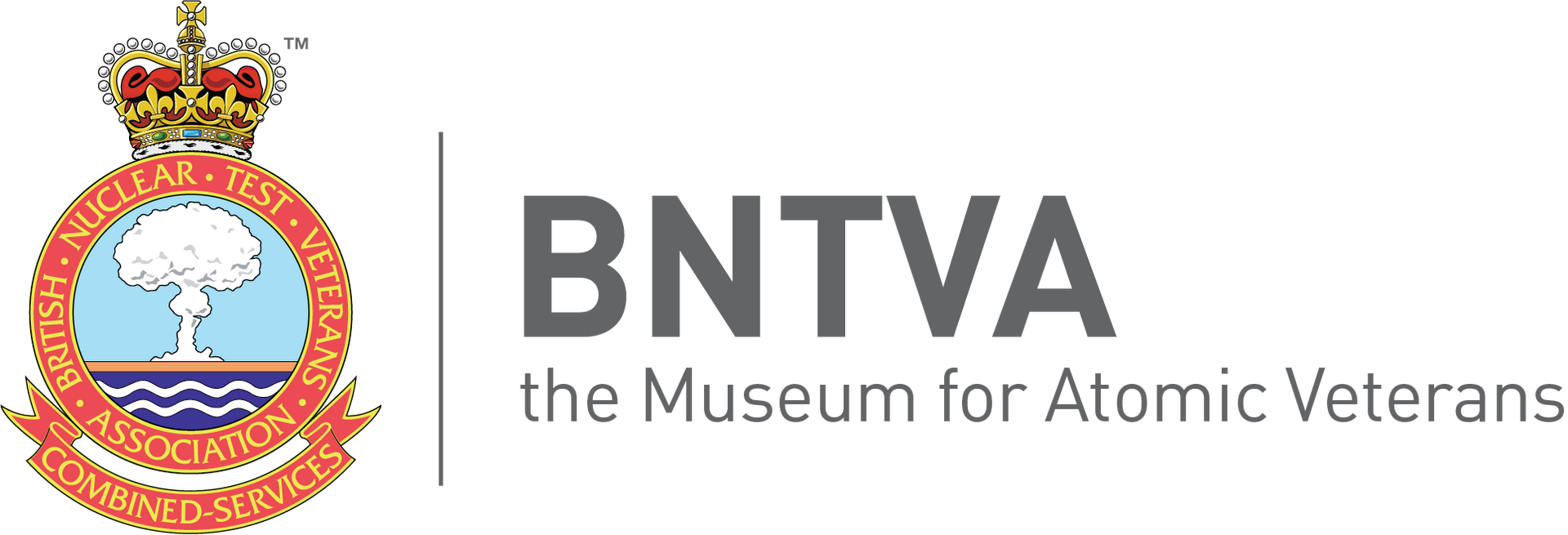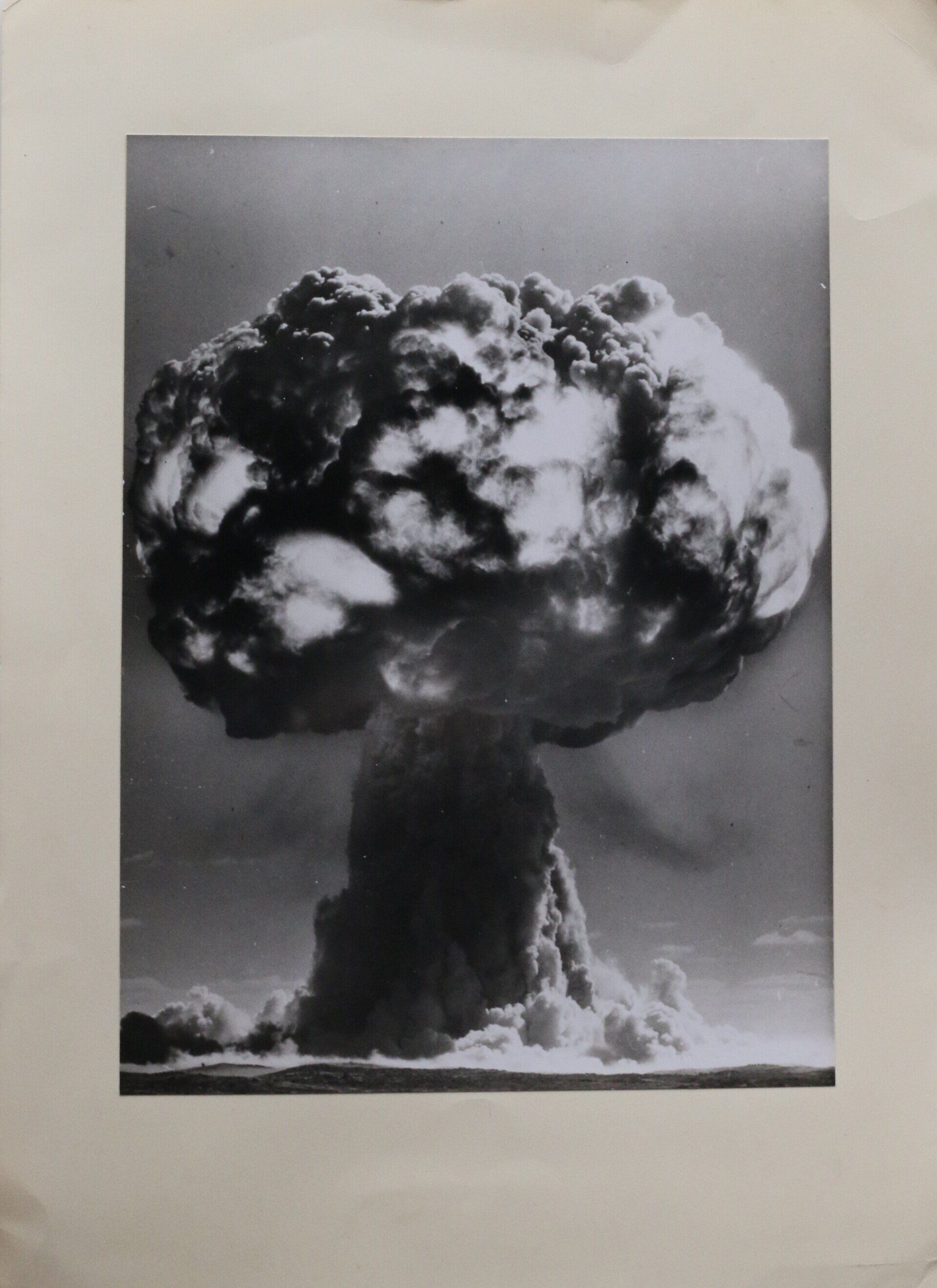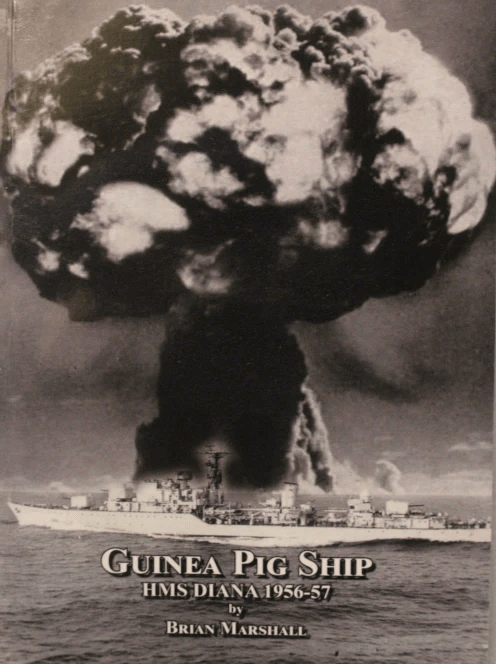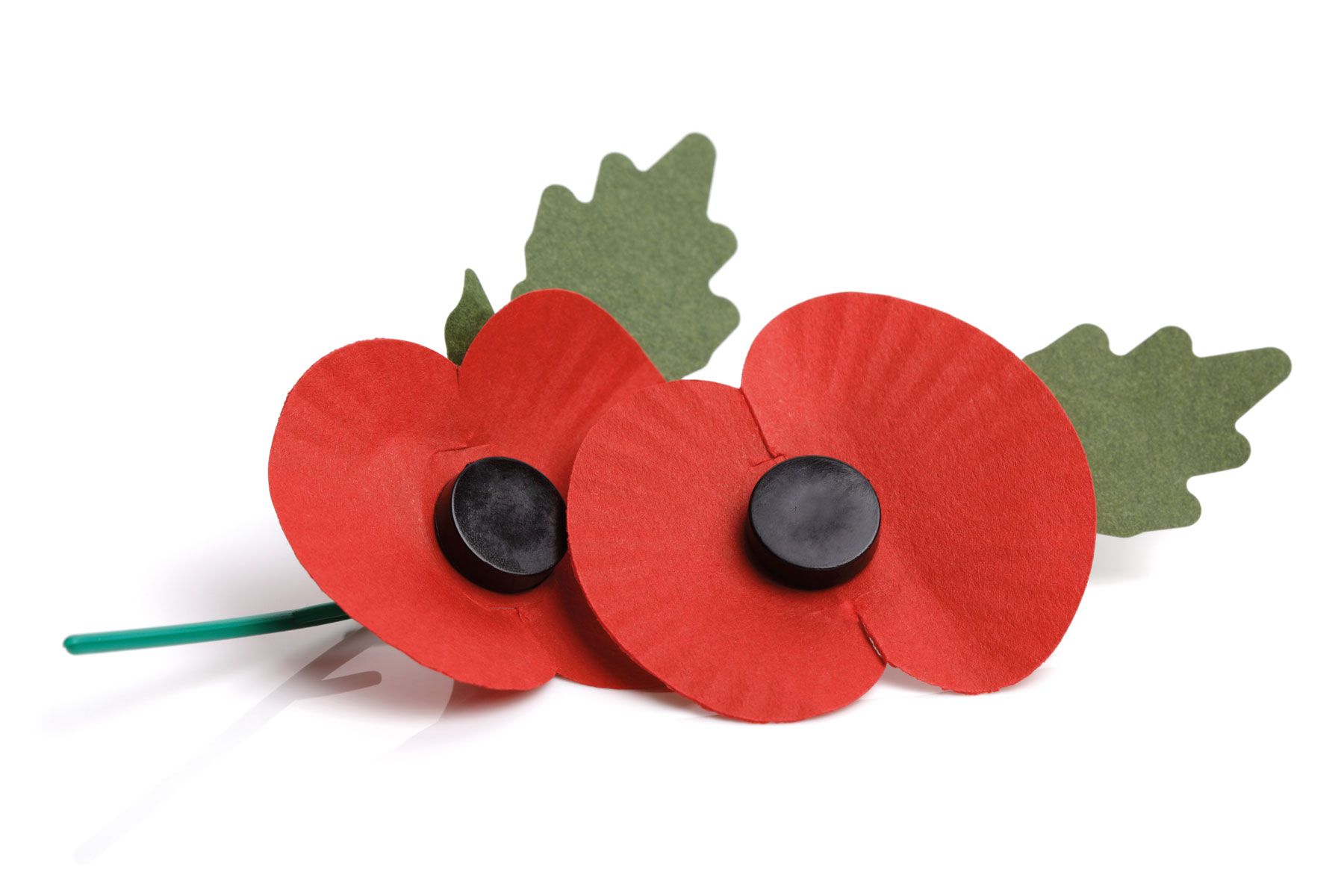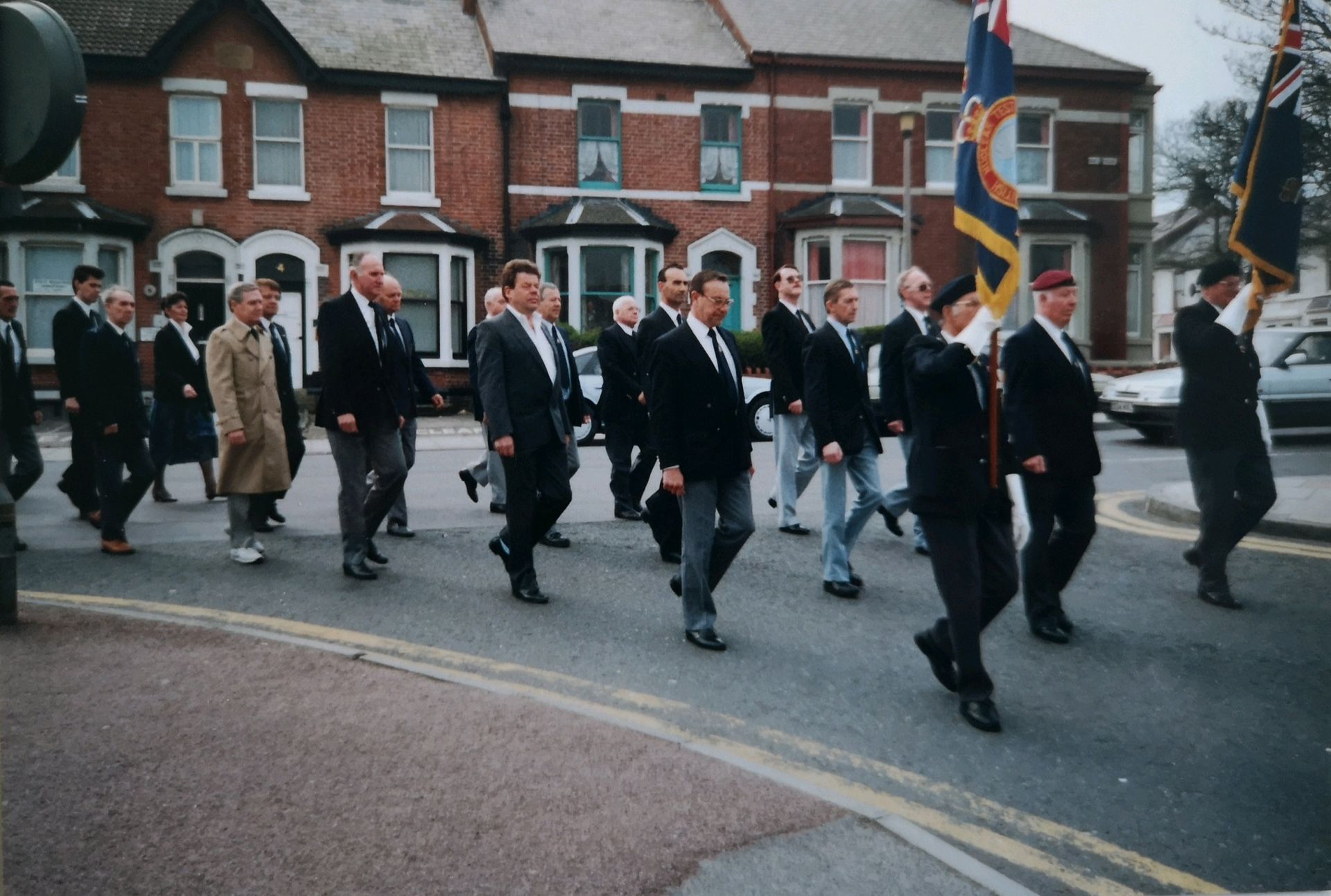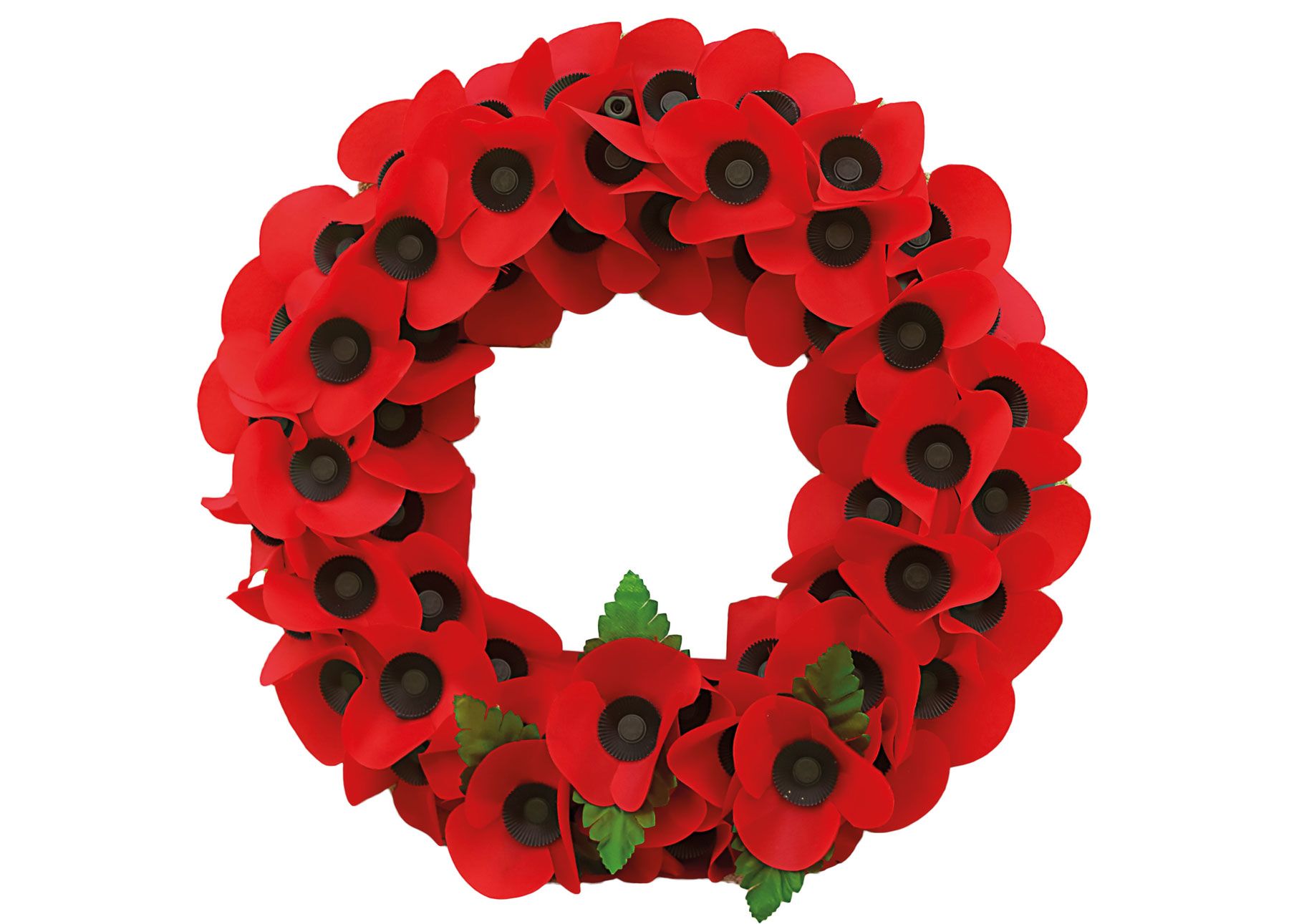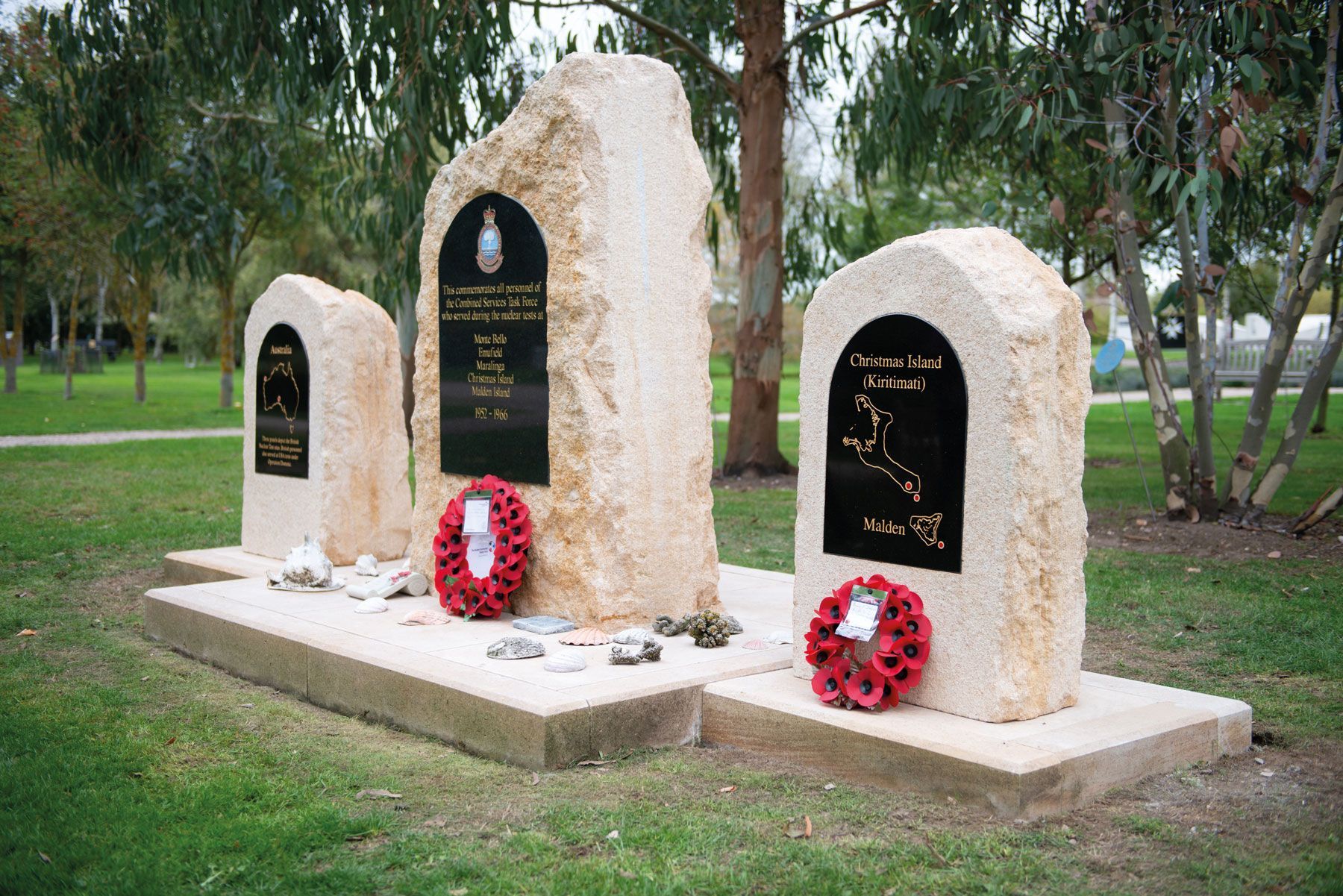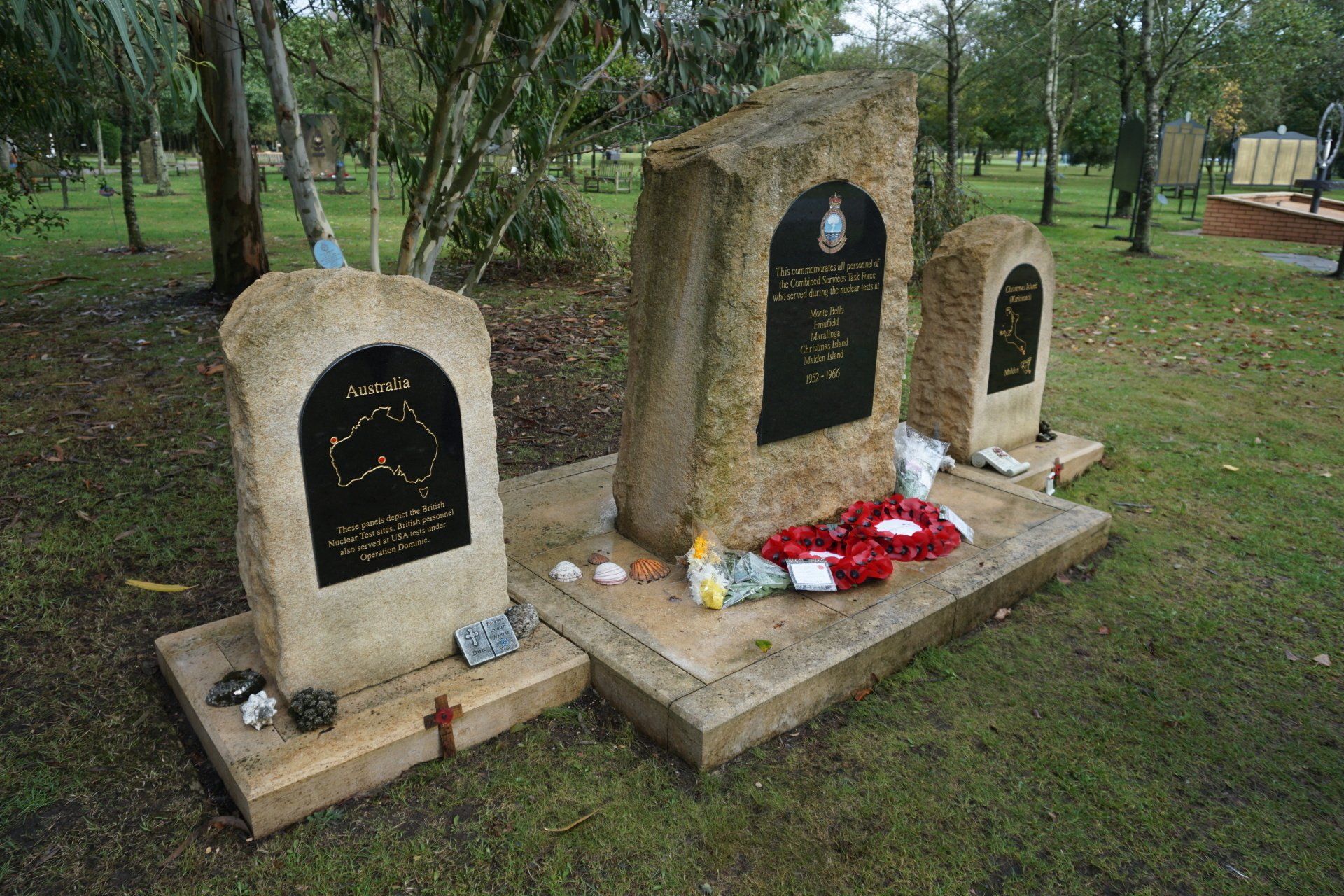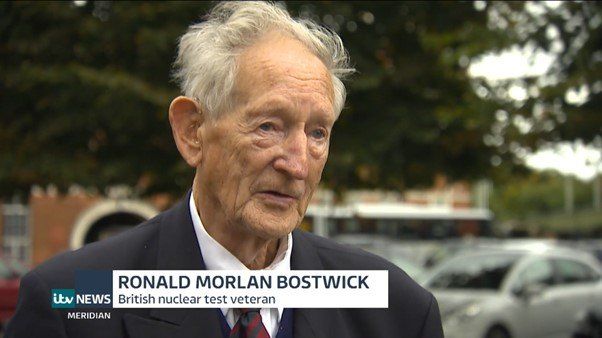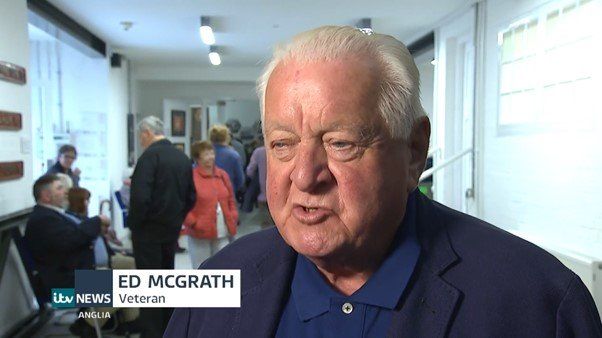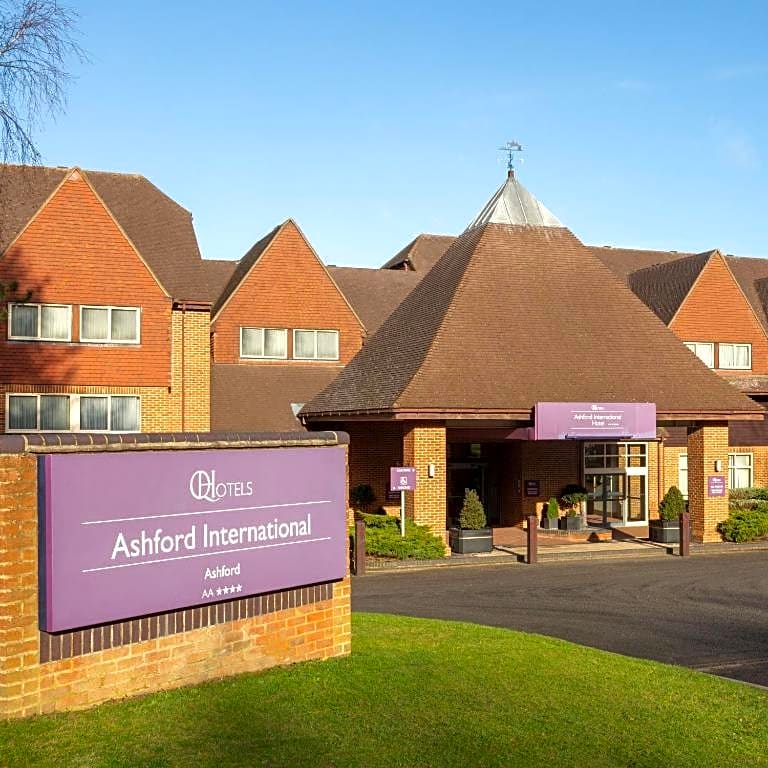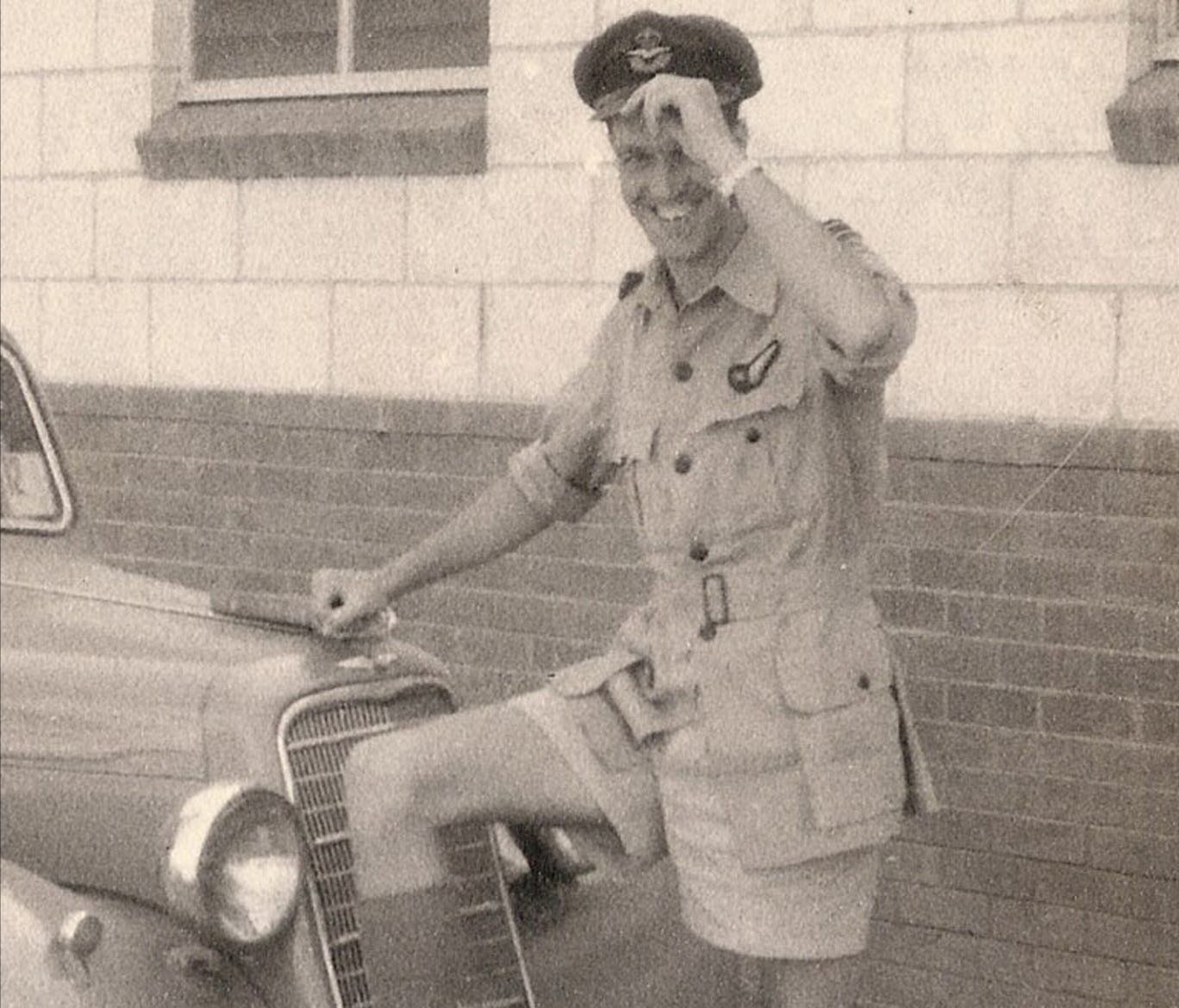This week I received an unexpected letter from a survivor of the HMS Diana's crew of 1956-57 after he viewed the BBC Breakfast interview with the BNTVA, by Naga Munchetty and Charlie Stayt on 11 June.
The amazingly warm and friendly man joined the BNTVA in the 1980s and he proudly wrote that his membership card was signed by our Honorary Lifetime President, Ken McGinley. We spoke at length that afternoon, and he sent Captain John Gower's autobiographical memoirs to the BNTVA for copying. He had won them in a raffle that Captain Gower had attended at a Diana Reunion many years ago.
His initial letter describes sailing through the fallout of two atomic bombs at the Montebello Islands (on May 16th and June 19th 1956), off North Western Australia. He writes,
"We were told that the first bomb wasn't dirty enough so there was a second bomb, which I believe was seven times more powerful than the one dropped on Hiroshima. To protect us we had hoses with holes punched in them on deck to wash the contaminated seawater over the deck. We sailed around in the fallout for 13 hours. We had scientists on board for the first explosion but they weren't on board for the second knowing presumably what they were in for.
I was 19 when I got bombed and am now 85. Of course, most of Diana's crew are dead now. Very many died of cancer and many wives suffered miscarriages and had children born with birth defects. I've known for 66 years that the powers that be just want us to go away. Can't imagine that Boris will do anything but please keep trying. There is talk of a medal which I paid £25 for many years ago which came from Australia. Strangely enough the inscription mentions many places but not Montebello and us..."
He then described his role on the focsle deck with Andi's father, Gwyn Jones, after Diana sank the Domiat at Suez. This gentleman became stuck in the sea whilst rescuing Egyptians and started to drown as a rope became entangled around him by a whaler. Captain Gower, always on the look out for his crew, shouted,
"Get that man out!" and so he was saved by two men from a watery grave.
Captain Gower's memoirs detail the exact movements of men and ship. He writes,
"My appointment came about by chance. The captain earmarked to command Diana broke both legs ski-ing and the Admiralty had to find someone to replace him. I was selected and had to quickly go down to Plymouth and commission the ship in February 1956. I was very pleased to be back at sea in command, although the circumstances were unusual. However, it left Aimee with a heavy burden, alone with three young children and a teenager to cope with. When I arrived on board I discovered that with the other ships in our squadron, namely the Duchess, Decoy and Diamond, we were to sail in company shortly afterwards for Malta via Gibraltar and thereafter I would be detached for special service. This we duly did and after a couple of days in Malta I learnt that my special task was to take the ship out to Australia to be a guinea-pig for the atomic trials about to take place off the islands of Montebello."
Captain Gower was a decorated WW2 hero who took part in the Arctic Convoys, D-Day and saved the crew of a Norwegian ship with his quick-thinking and expertise. However, the word he used to describe his duty on the Diana, and that of his crew, was of an
ordeal. Of around 300 men, 20 were National Service conscripts. He vividly describes the moment when the Diana left their squadron at sea and states,
"We were on our OWN."
Gower describes the urgency of Mosaic 1 and Mosaic 2, with the race to become full members of the nuclear club before the Partial Test-Ban Treaty would stop further testing. He was angry that since 1953, the Chiefs of Staff
"had wanted to know the effect of an atomic explosion would have on ships, their contents, equipment and men. How much radioactivity could a ship withstand and remain operational? HMS Diana and her crew were made available to provide the answers."
Instead of focusing on the league of events leading up to G2 and the crew shut down in the bowels of the ship experiencing both physical and psychological distress, this blog will examine Captain Gower's observations concerning the Diana's mission, the role of the BNTVA years later and the failings of the Ministry of Defence.
First and foremost, Gower states that the ship was a guinea pig ship. The Diana had
"11 working days to train for our ordeal" in the "gruelling heat".
Those who initially wore space suits ate limes and salt as the legs of their suits filled with sweat on 35 minute watches. The ship's company wore working rig, seaboots and carried gas masks. Only the engine room watchkeepers remained on deck, despite alternative reports being relayed. He is clear that 207 men were in the forward citadel and 95 in the after, and
"were suffering from the effects of cramped conditions, humidity and excessive sweating."
The STAAG mountings became extremely radioactive whilst sailing through the fallout, which Gower describes as 98kt, as the MOD admitted this yield in 1985. This yield matches a document in the possession of the BNTVA. The radioactivity levels were so enhanced on board, particularly around circulating filters and the pre-wetting hose that malfunctioned, that the ship was refused access to Fremantle Harbour. It sailed to Singapore whereby the ship's company repainted one side and Chinese labour painted the other...
Gower states,
"What puzzles so many of us is why, on conclusion of the trials, no effort was made to see what effect the explosions had, both physiologically and psychologically, on the men who witnessed them, and, perhaps more important, on those who went through the fallout. Yet we had no follow-up medical checks of of any kind.... The answer given by the Prime Minister in 1983 was that, "no one was exposed to any significant health hazard; therefore no tests were necessary." But without testing, how is it possible to be sure?"
He talks of the formation of the BNTVA,
"Understaffed and underfinanced, whose objectives are:
- To extract recognition from the MOD that servicemen were put to hazard during the nuclear tests without adequate care and protection
- To ensure proper medical care for those suffering as a result
- To secure compensation for them and their dependants."
Captain Gower talks of the early BNTVA health questionnaires that revealed the
"Alarming incidence of such diseases as cancer, skin complaints, early cataracts and deformities in their children." Talking of the NRPB studies, he states,
"Presumably these investigations have now been completed, thus resulting in the Defence Secretary's refusal to accept any liability."
"The MOD's attitude remains, as always:
"If you think you have a case, prove it!" No individual can do this",
writes Gower, "One has to accept that it is a battle lost."
Thus speaks a man respected by all of his crew, a man with wisdom and obedience but cynicism as to the way his crew was treated in the guinea pig ship. His account oozes both risk and rigour for the whole crew.


